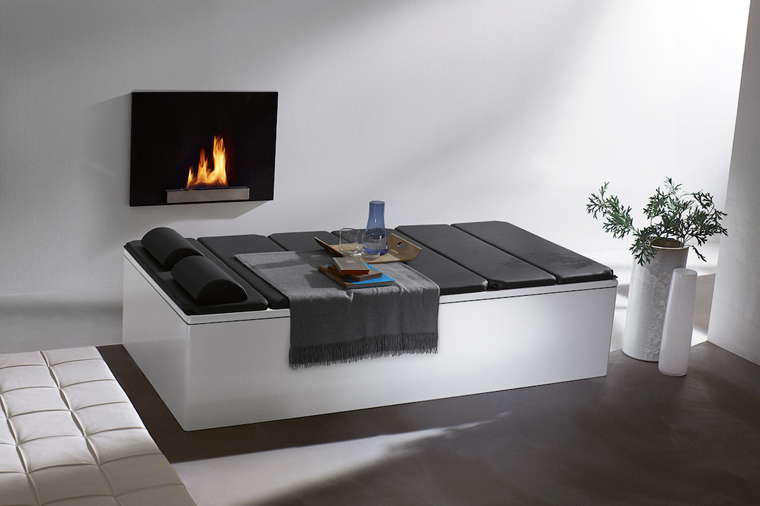The demands, requirements and wishes of people change throughout life. This becomes particularly evident in bathrooms in houses or flats. The standard bathrooms of old have long since ceased to merely serve for personal hygiene – they now also provide a space for enjoyment, relaxation and regeneration. Bathrooms that remain enjoyable throughout life require forward-looking planning as well as sanitary solutions that adapt flexibly to the users' individual requirements.
The demographic change presents far-reaching challenges for the German housing industry: Merely five per cent of all German residences are accessible – with a continuously growing demand for accessible living spaces. What many forget: Accessibility is also beneficial for children and young adults. Particularly in bathrooms, a lack of steps and generous room for movement make use of the facility more pleasant in all phases of life.
Floor-level showers, for example, have become a firmly established standard as they do away with interfering edges and make the bathroom appear more spacious. This makes them not only perfect for any phase of life, but also a real design element for bathrooms. Forward-looking planning helps to design bathrooms in such a way that they can be used independently at all stages of life while remaining attractive in the long term. Even small changes such as a seat, clever rail systems for holding on or non-slip surfaces create a distinct increase in comfort and safety. Sink and toilet elements with flexible height adjustment can be moved to the desired position at the press of a button. This allows toilets to be raised and lowered depending on user and task while sinks can be lowered for comfortable use while seated or by children. The increasing digitisation offers numerous features providing added comfort and safety: Integrated hot water limiters and electronic operating panels, for example, prevent scalding through precise temperature presets.
“We need solutions that adapt flexibly to the requirements”
Wolfgang Burchard, Spokesman of Blue Responsibility
RAS: Mr Burchard, which elements does a sustainable bathroom have to incorporate?
Wolfgang Burchard: Sustainability has many facets. Integral elements are, for example, environmentally friendly production processes, the use of innovative technologies, safety tested to the highest standards, selection of the right materials as well as water-saving and energy-saving products. But sustainability in bathrooms is also expressed in the design and the architecture. We refer to these elements as social sustainability.
RAS: How exactly do you define social sustainability?
Burchard: To us, social sustainability means that a product solution is not only focused on economic and ecological criteria but also on the requirements of people. That means, for example, that products must never become so highly technical and complicated that users can no longer operate them. With regard to saving water, we have to find the middle ground between the desire for comfort and the principle of saving water – nobody prefers a meekly dripping shower over of a full jet of water. With regard to bathroom design, it means that bathrooms also have to meet aesthetic requirements to ensure full enjoyment by the users.
RAS: How do you assess the current situation on the housing market with regard to multi-generation bathrooms?
Burchard: Architecture and housing construction are currently primarily focused on the requirements and demands of younger, healthy, working adults, often neglecting the needs of children and older people alike. But even where demographic developments are taken into account, the concepts usually focus on stereotypes of certain age groups which hardly do justice to the heterogeneous requirements. What we need are solutions that adapt flexibly to individual requirements.
RAS: What are the special challenges of a multi-generation bathroom concept?
Burchard: One of the greatest challenges is surely to create awareness for the issue with end customers so that bathrooms achieve a higher priority during planning and consequently become larger, which will give them the required flexibility later on. Anyone planning a bathroom today has to realise that they will probably be using it for the next 20 years.
RAS: What exactly are the details of multi-generation solutions?
Burchard: It is crucial for the long-term use of bathrooms that not the people have to change their habits during the course of their lives but that rather the bathrooms have to flexibly adapt to the changed requirements. Height-adjustable elements, sinks with wheelchair access, avoiding edges and sufficient options for sitting and holding on are important examples here. These should be planned from the outset to ensure that generous room for movement is available later on. Used correctly, digital high-tech solutions in the bathroom also support independent and safe use for all generations, making everyday life easier. The great thing about multi-generation bathrooms: They are not only long-term solutions and highly convenient, they also appear spacious and elegant and are real eye-catchers.
